The world of exotic cars has never looked as good with more and more incredible exotics hitting the streets in 2016 such as the Porsche 911R, Ferrari 488, Bentley GT3R, Audi R8, and even the reborn Acura NSX. It seems as though the idea of limited production cars is becoming the norm with almost every manufacturer.
It also seems that some manufacturers like McLaren have decided to not only limit how many units they create, but also create an entirely new model every year (having announced 14 new models).
While all these new awesome limited production cars are hitting the market, it has taken a significant toll in terms of depreciation on the more mass-produced exotics from the past few years.
Exotics have never been more affordable than now with the late model Lamborghini LP560, Ferrari F430, Bentley Continental GT, Aston Martin DBS, and many more selling for almost 50% of their original MSRP with less than 5,000 miles on the odometer.
This leads you to wonder why more people aren’t buying them, driving them, enjoying them, and then reselling them for a profit like we teach at Exotic Car Hacks.

In order to understand how bubbles work in the economy, we must understand why exotic cars depreciate so quickly even though they are so rare compared to mass-produced vehicles like Toyota and Honda.
We will use a few examples from Aston Martin and Lamborghini to guide our discussion. You heard from me previously on how cars depreciate in general based on four key factors: incentives on new models, warranty expiration, lease returns, and reach through financing. While this holds true for some exotic cars as well, it isn’t applicable universally across the board.
Have you ever wondered why every new Ferrari costs a premium, has a long wait list for new spec, but yet Ferrari is hardly profitable as a brand?
On the other hand, Lamborghini or Aston Martin come up with a brand new model, many times equally limited in production and slightly cheaper; yet they can’t seem to move units fast enough. They end up heavily discounting them with aggressive lease offers and still find themselves with constant surplus of inventory.
Weird right? There is a science to the madness.
Lamborghini and Aston Martin do not build $300K cars; they build $150K cars disguised as $300K cars, and the public isn’t stupid enough to buy into the hype. It’s that simple, but to understand it you must dig deeper.
Limited production in its true definition is much more than just a car that is produced in small numbers; it is about creating a unique product with strong returns on value, a loyal customer base, and rising demand which brings the price way up.
Let’s take the Lexus LFA as an example with only 500 units ever produced on a brand new chassis with unique styling, engineering, and innovation. There was only one LFA, and it stood to showcase what Lexus was capable of. Today, the car is still selling for roughly the same that it sold for when it was brand new.
The same can be said for the Ferrari LaFerrari, Porsche 918 Spyder, or any Pagani Zonda hypercars. These cars are not just limited in numbers, they are limited in terms of their innovation and distinct one-off like existence. While these are what I call hypercars, there are other exotic cars similar to this in the cheaper and more attainable range.
Take the Mercedes SLS AMG as an example, which sells for 10-20% less than its original sticker price with upwards of 20K miles. Or how about the Acura NSX selling today at over 20% above their original stickers back in 2004 with 70K miles, yet a similar 2004 Lamborghini with 20K miles selling for 50% below its original invoice?
Why did the SLS and NSX go up in value, while the Lamborghini decreased and stayed down in value?
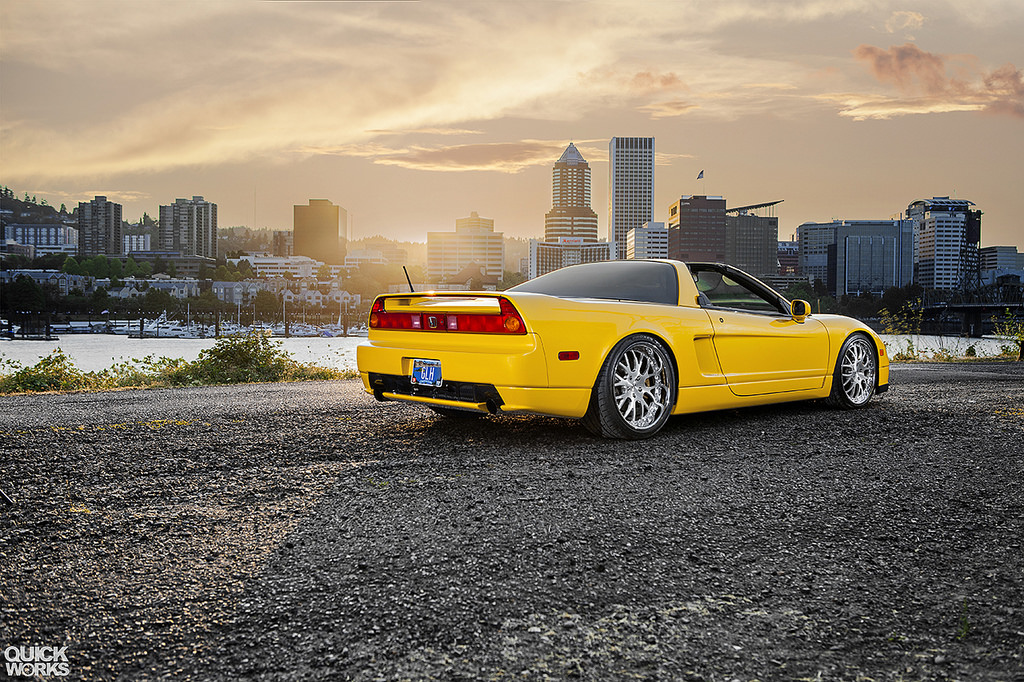
I said earlier that Lamborghini and Aston Martin build $150K cars disguised as $300K cars, and they do so because they can and realize that in order to stay profitable, they need a few people to take the hit for everyone else who isn’t stupid enough to fall for it.
Take the pinnacle flagship car for Aston Martin, the Vanquish: a car whose timeless design, beauty, craftsmanship, and exhaust note makes jaws drop everywhere. Yet despite being a flagship car, it is sporting a 12-year-old engine (just revamped time and time again, but never changed), an old chassis, transmission, and recycled components from various other Aston models. So does a new carbon body made of the same material of previous models for a decade, a Garmin navigation unit, and some pretty trim bring the value up or is it all speculation?
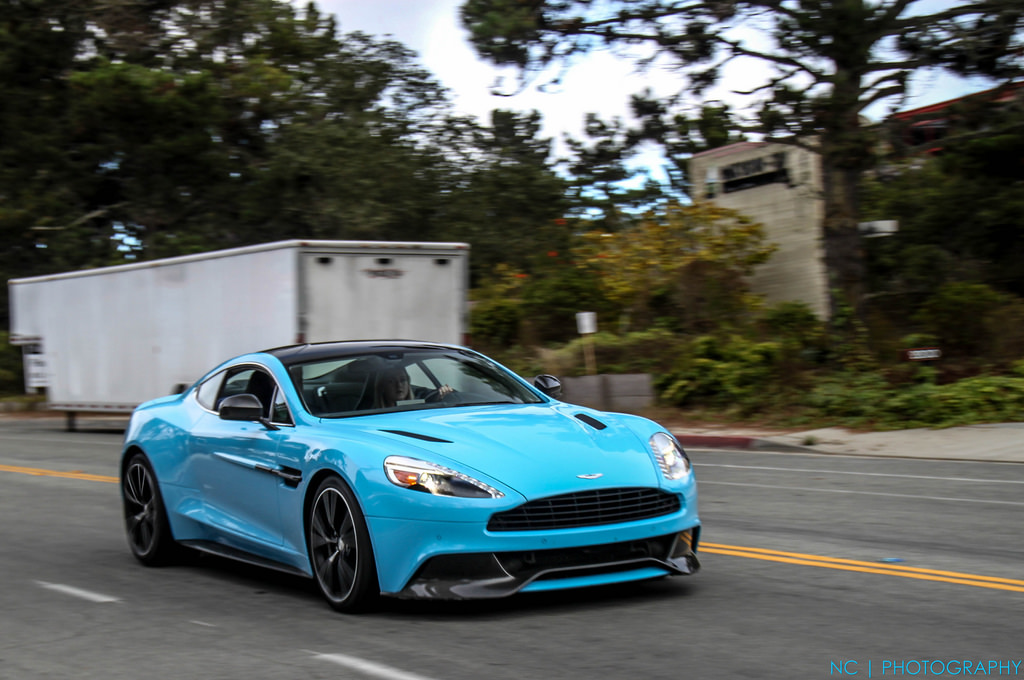
Let’s look at the Lamborghini Huracan.
It is an important model for Lamborghini as it replaces the car that has helped it run laps around Ferrari financially; the Gallardo. You would think the attention to detail would be high, but almost every mechanical or electronic component in the car has an Audi badge and part number on its underside.
If the car is ultimately no different than an Audi R8 V10 Plus in just about every way, yet is inferior in craftsmanship, materials used, electronic advancement, and so much more; why does it cost $100,000 more? Even if we argue that the brand name is worth that difference, then what is the excuse for the inferior quality over the R8? Why not just make a product that is equally good, but distinguished by the badge that it stands for?
If the R8 V10 Plus is $220K MSRP fully loaded, then its Huracan sister based on value alone should be sold for $150K due to its inferiority in almost every single category. Perhaps this is the reason why the Huracan has depreciated over $90K (30%) in just 90 days, and the R8 V10 Plus has yet to plummet any major amount.
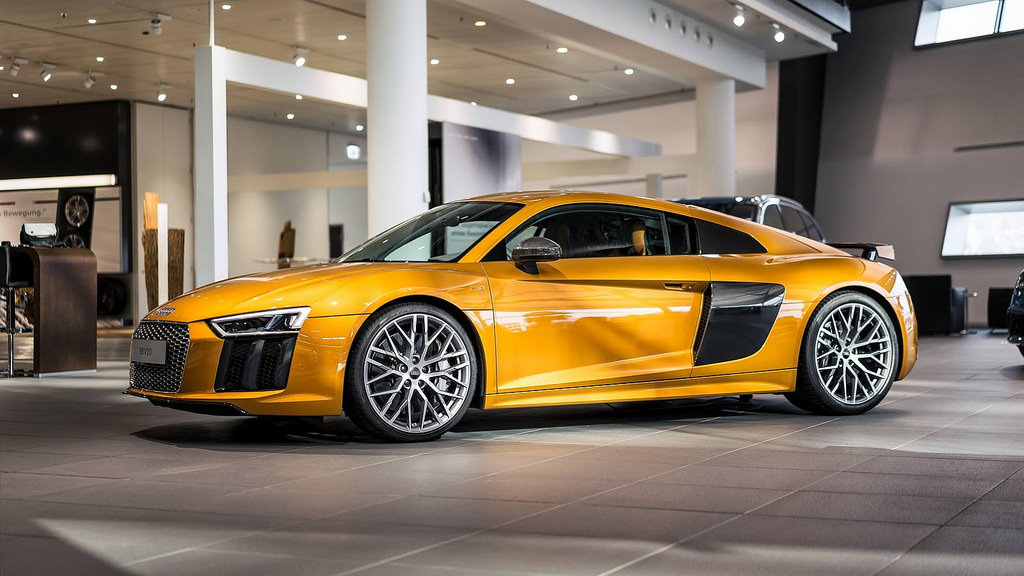
Now you understand why some of today’s most beloved exotics are plummeting to their deaths despite being around the block for so little time. Many manufacturers want you to believe that its the economy or lack of demand, because they do not want to face the fact that their product is flawed and that distinguished customers are actually catching on.
With manufacturers understanding this shift in buying behavior comes the idea of speculation and capitalizing on trends by introducing fewer models with functions that are yet going to be seen, and the consumer believing that based on this limited nature the pricing will continue to rise without limits.
Take for example the rise of Dual Clutch Technology and the disappearance of the 6-speed manual transmission. With the announcement by most manufacturers that the 6-speed transmissions were going away and never coming back, every single 6-speed exotic automatically became a collectible.
What once was common is now a feature you can only get on an older car, which is no different than the principles shared above. It was no longer the limited number of production, rather a feature or characteristic that truly made the car limited that brought pricing back up.
The 911R introduced by Porsche is no different than a GT3 without a wing and 6-speed transmission, but in some instances sold for over $400K over the sticker of the car because demand rose as collectors believed values would keep rising. The car didn’t sell for $400K over for being truly special, it sold for that because people bought into the hype.

Hype creates bubbles, and by watching what is happening mainstream we can understand why there is a bubble going on in the exotic car world. There are indicators you can pay attention to:
1. There are too many special cars for sale on the used market at significant premiums when supply exceeds demand.
When the Porsche GT3RS came out with its third generation, it was one of the best cars you could buy for $200K. The reality was you couldn’t touch one for less than $260K partly because Porsche added premiums knowing demand was limited, and partly because most ended up in the hands of resellers or individuals who had no intentions of driving or enjoying the cars and instead ended up being resold to others for a profit. I don’t blame anyone wanting to make 20% on their money in 30 days, but I am simply pointing out the indicator.
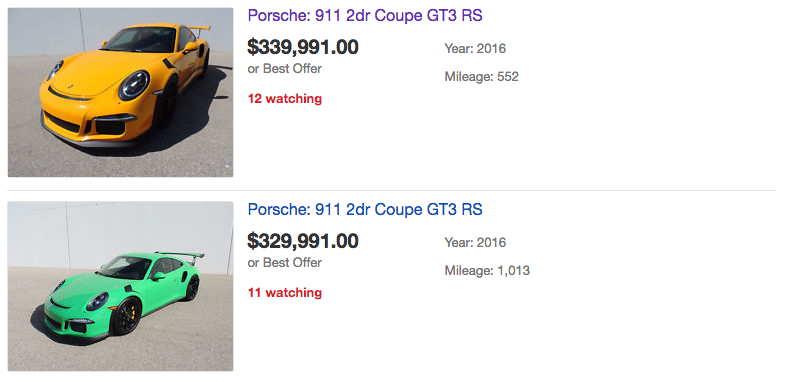
With massive inventory flooding the market, you would expect that pricing would stabilize, but it didn’t for a while and still fully hasn’t. The values weren’t there, but those who bought them realized that people would eventually cave in if they didn’t drop their price. Some dealers even went out and bought 7-10 units trying to corner the market and capitalize on the perceived demand.
When premiums are added to cars for no reason other than speculation, then it is no different than the housing crisis which had builders asking for $50-100K premiums just because they could.
2. Wholesale values and retail values have way too high margins.
I always wanted a Lexus LFA, but noticed that all (the few for sale) were retailing for over $350K, which is a $100K increase over the year before. I simply assumed the market had gone up similar to the McLaren SLR from 2006. However, some research linked me to data that showed cars were being traded for the same exact $250K range as they were the previous year, but all retail prices were $100K more. The cars had sat for almost a year which meant dealers hadn’t really paid more.
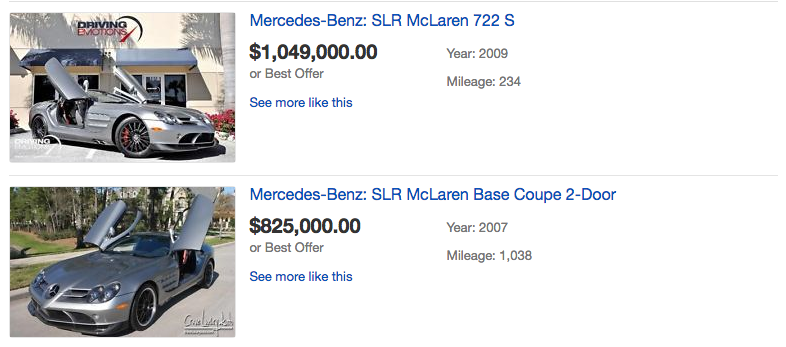
I realized that with very limited supply, it is very easy to simply raise the price and push all your competitors to follow suit. I realized that this strategy was being used for many cars. Dealers were leveraging speculation to justify $100K price hikes for pure greed. Since everyone followed along as numbers were limited and demand was very low, no one was noticing these hikes.
We saw the exact same thing with the Ferrari Scuderia and Ford GT which looked like they had huge price increase, but once again on speculation alone, not with merit, the lack of supply, or the increased demand. It was just because.
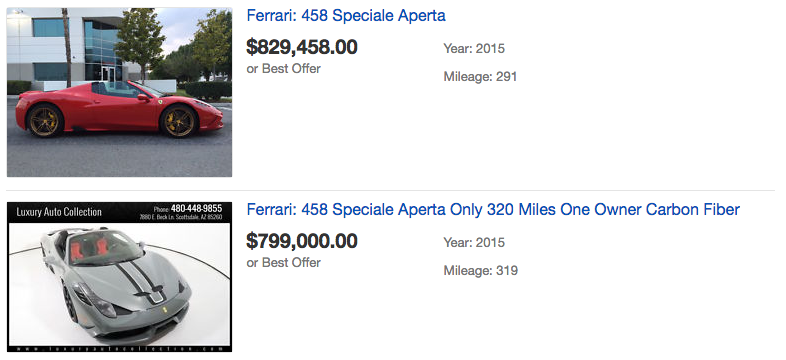
3. Lending to Capital Ratio.
You would think that banks are all about protecting themselves against losses, and they are, which is why the book values don’t match recent price hikes on some of these key exotic cars. However, they still choose to offer very attractive financing offers on cars that don’t meet real book values.
In other words, banks are actually capitalizing on this as they understand they are lending to the top 1% with outstanding credit for amounts larger than home values for most people. Even though the collateral cash value is 30% less than the loaned amount, they will gladly extend an invitation to play. This is exactly what happened during the 2008 housing market crash when lending was so relaxed, and everyone looked the other way.
Now that you know what these indicators are, what does it all mean?
It’s quite simple. Every bubble must burst, and this is a healthy process where markets correct themselves.
The 2008 real estate crash has no correlation with any crash or correction we could see in the exotic car world, and this is partly because it is contained to a very small percentage of the mass population who can afford these cars. Also most people who may be in bad positions can afford to take the losses.
The important factor is that by understanding the principles taught at Exotic Car Hacks, you do not have to become a victim of losing money on your next exotic car purchase. By understanding how to leverage this new piece of information combined with what you learned as an insider, you can drive your next exotic car as an asset.
Remember that every correction, no matter how small, creates an opportunity for a higher profit. This was the concept behind my very first exotic, a 2004 Lamborghini Gallardo I had purchased a decade ago for less than I could today even though it was only 3 years old then.
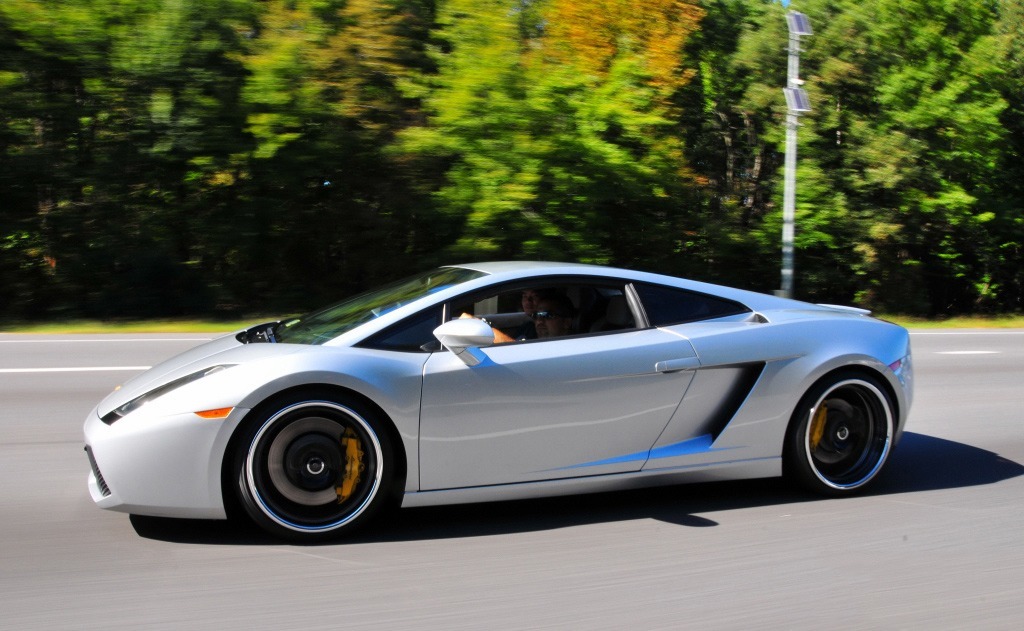
Don’t delay, get educated, become an insider, and take advantage of the opportunities of driving exotic cars for fun and profit!
